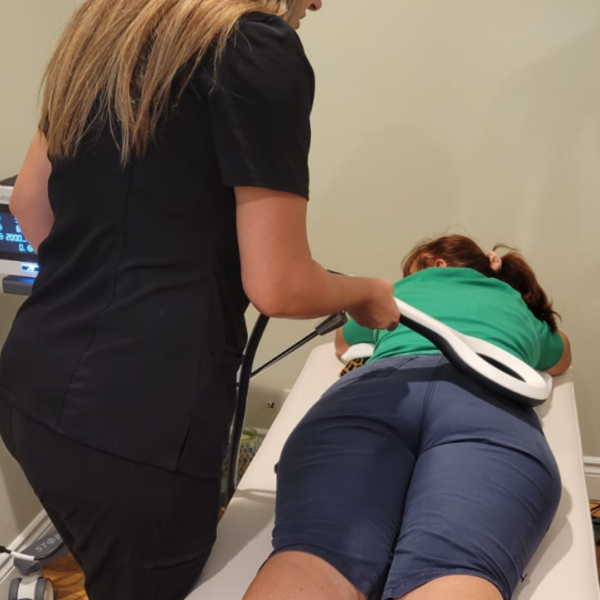Magnetolith
In the course of Extracorporeal Magnetotransduction Therapy (EMTT), painful areas of the body are treated with high-energy magnetic pulses, the field strength of which lies within the therapeutically effective range – 10 mT (millitesla) and upward. With this pulse intensity, it is possible to achieve a therapeutic effect in the cell. The generated energy is transferred via an applicator to the body areas to be treated. The individual pulses penetrate the tissue so that even deeper tissue layers can be reached. There is no temperature increase in the tissue, due to the short duration of the individual pulses.
Magnetolith successfully treats musculoskeletal diseases that include:
- Degenerative joint diseases
- Wear and tear conditions such as osteoarthritis (knees, hips, hands, shoulders, elbows, herniated discs, spondylarthrosis)
- Pain treatment
- Chronic pain to include back pain, lumbago, tension, radiculopathy
- Sports injuries
- Chronic inflammation of tendons and joints, tendon overuse syndromes, inflammation of the pubic bone
EMTT
(Extracorporeal Magnetotransduction Therapy)
Health
EMTT®: How It Works While EMTT relies on a different operating mechanism than ESWT, also known as shock wave therapy, does, the two modalities are highly effective when used together. In the course of EMTT, painful areas of the body are treated with high-energy magnetic pulses, the field strength of which lies within the therapeutically effective range – 10 mT (millitesla) and upward. With this pulse intensity, it is possible to achieve a therapeutic effect in the cell. The generated energy is transferred via an applicator to the body areas to be treated. The individual pulses penetrate the tissue so that even deeper tissue layers can be reached. There is no temperature increase in the tissue, due to the short duration of the individual pulses. When looking at the difference between EMTT and ESWT, ESWT acts using high-energy acoustic/physical signals in a local treatment area, while EMTT acts using high-energy electromagnetic radiation in a regional treatment area.
- Evidence-based
- Non-invasive
- Wide range of applications
- Outpatient procedure
- No side effects
- Easy to use
- High level of patient comfort
- Degenerative joint diseases
- Wear and tear conditions such as osteoarthritis (knees, hips, hands, shoulders, elbows, herniated discs, spondylarthrosis)
- Pain treatment
- Chronic pain to include back pain, lumbago, tension, radiculopathy
- Sports injuries
- Chronic inflammation of tendons and joints, tendon overuse syndromes, inflammation of the pubic bone
